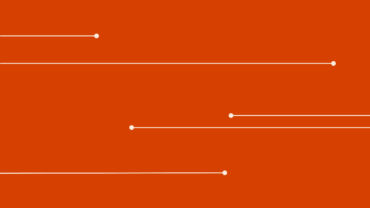Forrester’s independent research study on cost for implementation, licensing, and ongoing maintenance of indirect tax software and its cost savings.
When making the business case for investing in automated indirect tax technology (IDT) and technology implementation, what the company stands to gain in terms of efficiencies and return on investment (ROI) are certainly important key factors, but the discussion must eventually come around to cost.
Specifically:
- How much is the system going to cost the organization up front?
- What internal resources or costs will be necessary to implement and maintain the system?
- What recurring costs (e.g., licensing fees) will the organization have to pay?
- What will the total cost be in the first year? And every year after that?
- What does the breakdown of those costs look like by function, department, etc.?
Jump to ↓
Research on the cost savings of technology implementation
What was the breakdown of the implemented indirect tax technology?
Final total cost for technology implementation
Research on the cost savings of technology implementation
To give corporate tax teams a more reliable framework for determining how an automated indirect tax solution might help their organization, Thomson Reuters commissioned Forrester Consulting to conduct an independent research study on the cost savings and business benefits of ONESOURCE Indirect Tax, the company’s cloud-based tax engine.
In order to evaluate the true costs of an investment in tax automation, Forrester Consulting conducted extensive interviews with seven ONESOURCE indirect tax customers, all of whom had transitioned from legacy tax systems and reported the costs they had incurred. Forrester then aggregated the results into a “composite organization” to illustrate its findings.
For reference, this “composite” organization—let’s call it ‘Composite Co.’. —is a multinational conglomerate that sells products and services in 70 countries, generates $5 billion in annual revenue, and has 28,000 employees.
What was the breakdown of the implemented indirect tax technology?
The overall cost of integrating ONESOURCE Indirect Tax into Composite Co. was broken down into three parts:
- Implementation costs
- Licensing costs
- Ongoing maintenance and training costs
1. Implementation costs
Though the exact amount of time required for implementation is different for every organization, getting ONESOURCE Indirect Tax up and running is still a fairly time-consuming process, due to the complexity of systems integration and data transfers involved.
At the composite organization created from the companies Forrester interviewed, the technology implementation time was about ten months, and involved four internal employees spending 40% of their time on the project. Additional resources included third-party consulting services ($200,000), and one full-time salary for the implementation team ($108,000). The initial implementation cost was $391,440.
In Years 1 through 3, it was assumed that the business would be expanding, bringing more offices and lines of business into the network, requiring additional implementation costs.
With the system online, however, only two internal employees at 40% were required, and only $100,000 was needed for third-party resources plus one full-time salary for the team leader ($108,000).
In Year 1, then, implementation costs dropped to $195,720 including risk adjustment. In Years 2 and 3, fewer third-party resources were needed, dropping the cost to $143,220 annually including risk adjustment for each additional year.
Cost: The total cost for initial technology implementation and three years of additional services was $832,000. Forrester also built in an additional 5% risk adjustment to account for potential differences in cost, raising the total estimated implementation cost to $873,600.
2. Licensing costs
During the implementation phase, licensing for ONESOURCE Indirect Tax costs nothing, because licensing costs only kick in once the product is up and running.
In Forrester’s study, Composite Co. licensed two indirect tax modules, ONESOURCE Determination and ONESOURCE Compliance over a three-year period. In Year 1, licensing for Determination and Compliance cost $210,000 and $70,000 respectively, for a total of $280,000. Risk-adjusted, those respective costs in Year 2 were $218,400 and $72,800, and $227,136 and $75,712 in Year 3.
Cost: For Composite Co., total licensing fees over a three-year period for both the Determination and Compliance modules were $917,750.
3. Ongoing maintenance and training costs
Because ONESOURCE Indirect Tax is a cloud-based platform, it requires relatively little attention from the IT department compared to the legacy systems it replaces. All of the tax rates, rules, and codes are automatically maintained by Thomson Reuters, and the system does not require any extra hardware beyond an organization’s larger enterprise resource planning (ERP) systems. Consequently, “maintenance” typically boils down to making sure that any changes to the ERP system are accounted for in the data that the system uses for its calculations, especially if new offices and lines of business are being added to the network.
Cost: In Year 1, one IT employee at Composite Co. spent 30% of their time on maintenance. That employee’s time was valued at $32,400 for Determination and $10,800 for Compliance—for a total of $43,200. In Years 2 and 3, as the system expanded, one more IT person was added, doubling maintenance for Determination (to $64,800) but not for Compliance.
Total maintenance cost for three years: $194,400.
See how you may benefit from an automated sales, use, and global tax solution with our savings calculator.
Cost of technology implementation training
On the training side, ONESOURCE Indirect Tax is an intuitive, easy-to-use program overall, but some training is necessary for the finance and accounting departments to get the most out of their technology investment. In the Composite Co. example, the only training necessary was three hours of initial training in the first year, then three hours of additional training annually to refresh people’s knowledge and explain new features. Staff with less technical experience could take a bit more time, so Forrester accounted for this possibility by adding a 10% risk adjustment.
Cost: Training costs were $1,558 initially to train 10 people, and $3,115 each for Years 1, 2 and 3, to train 20 people each year.
Total cost for onboarding and three years of training: $10,903
Total cost for both maintenance and training: $205,303*
*Plus 10% risk adjustment: $225,834
Final total cost for technology implementation
Implementation: $873,600
Licensing: $917,750.00
Maintenance and training: $225,834
TOTAL: 2,017,185
In addition, Forrester calculated the Present Value (PV) for the amount above, providing a total risk-adjusted PV of $1,738,854.
According to Forrester’s research, Composite Co.’s final tally on their automated indirect tax investment over three years of operation looked like this:
Total cost (PV): $1.7 million
Total benefits: $3.8 million
ROI: $120%
Net present value: $2.1 million
For a more in-depth look at Forrester’s independent research on the costs and benefits of the ONESOURCE Indirect Tax automation platform, download the full study.

ONESOURCE Indirect Tax
Maximize the impact of digital transformation with integrated tax technology.
Learn more ↗












